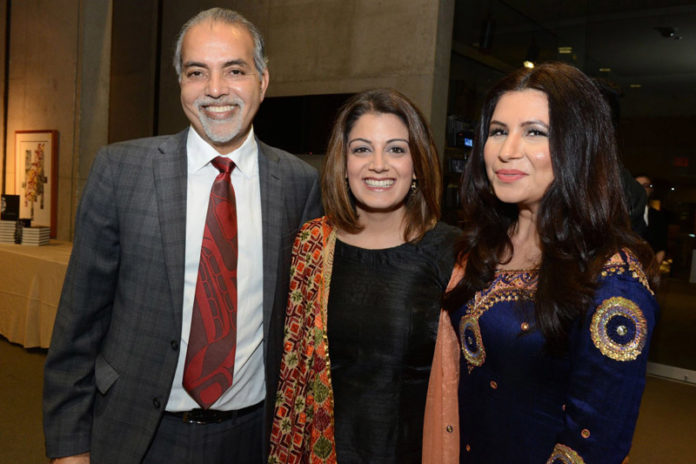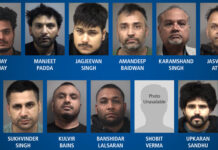Barj Dhahan business story began when still a student at the university in Vancouver, he leased a gas station (petrol pump) in 1979
By Gurmukh Singh
VANCOUVER: Few first-generation Canadian immigrants have succeeded like Barj Dhahan (Barjinder Singh Dhahan) of Vancouver.
And even fewer have benefited their home state Punjab in India with charity work in education, health care and employment as much as him.
Dhahan is also the man behind the biggest award for the promotion of his native Punjabi language – the annual Dhahan International Punjabi Literary Prize of $25,000 started in 2014.
A self-made man, he comes from the village of Dhahan between Banga and Phagwara in Punjab in India.
Starting from scratch in the early 1980s, he went on build his Sandhurst Group of Companies with businesses across gas stations, real estate and Tim Hortons outlets (Canada’s equivalent of McDonald’s).
His father Budh Singh Dhahan, a freedom fighter, left his family behind in Punjab and migrated to Canada in 1959 to settle in Port Alberni on Vancouver Island as a lumber mill worker.
“Dad left Punjab because he wanted better education and life his five children. His sister’s family was already settled in Port Alberni since 1933, so he joined them,’’ he says.
Dhahan was 10 when he with his mother and four sisters joined his dad in Canada in 1967.
“At the age of 14 as a school boy, I started working in a general merchandise store to supplement family income. That job laid the foundation of my later business success as I learnt the value of hard work. I learnt everything there – assembly of bicycles and furniture,” recalls Dhahan.
Later in 1973, the Dhahan family shifted to Vancouver where his father quickly established a successful construction business. “But dad wanted do something for Punjab. In 1979, he returned to his village and started the Guru Nanak Mission Medical & Educational Trust,’’ says Dhahan.
The Guru Nanak Mission Medical & Educational Trust has been the centre of the Dhahan family since then.
“In 1984, the trust opened a 40-bed hospital to serve rural Punjab. Today, the hospital has expanded to 225 beds. The trust also started the Guru Nanak College of Nursing in 1993. This nursing college works in partnership with the University of British Columbia. Over 2,000 girls in Punjab have got their nursing diplomas and degrees from this college and over 250 of them have moved to Canada. The trust also runs elementary and high schools,’’ says Dhahan.
As his dad got busy with charity work in Punjab, young Dhahan charted out his own destiny. That’s where the Barj Dhahan business empire began.
While still a student at the university in Vancouver, Barj Dhahan leased a gas station (petrol pump) in 1979. “It was my first business venture. I worked on my gas station as well as finished my university degree in 1983. After five years, we started expanding and we are still expanding. This year, we will add six more gas stations,’’ he says.
Apart from gas stations, Dhahan is also the biggest Indo-Canadian franchisee of Tim Hortons outlets in Canada.
“My group got into Tim Hortons in the 1990s. In fact, our first free-standing Tim Hortons at Maple Ridge created a national record in the first-year sales iin 1999. There are 7,000 Tim Hortons outlets in the world, it is among the top 70. We are building five more Tim Hortons this year,’’ says Dhahan who is also involved in major construction businesses in the Vancouver area.
Barj Dhahan business with literary pursuits
The annual Dhahan International Punjabi Literary Prize of $25,000, started in 1914, is the latest feather in the Dhanan family’s cap.
“The Punjabi language has been divided by religion and scripts. I want to unite all Punjabis . This award is for both Gurmukhi and Shahmukhi (used in Pakistan) scripts,’’ says Barj Dhahan. (Courtesy of the Times of India where this article appeared on January 23)
READ ALSO: How Sahota brothers became leaders in carrot production in Canada









The years (dates) in this article are very important. Yes, prior to 1990 it was easy to become successful, but with every success, I believe, the ‘system’ plugs the loophole to stop anyone else ‘getting through’ that loophole. These type of OLD NEWS is just nonsense.
What I would like to see is THE PERCENTAGES of success stories, especially in 2nd generation immigrants and possibly also an article on the (secret) bank bailout of 2008.
Over 250,000 people come to Canada each year, about 300,000+ LEAVE Canada each year! Why,why why? So, with this type of article, I would like to see some statistics of how many people, for example, who came in 1991, are still in Canada and are a success, left, etc.
I also beg to differ, the Canadian education system is NOT better than Indian or elsewhere, it is DIFFERENT… In addition to immigration, outsourcing-education is Canada’s 2nd largest ‘export’…. In Canada if you qualify in Ontario, Alberta (for example) does not accept it.
While congratulating the above people for ‘getting through’, the fact remains that no one else can get through ‘that loophole’ anymore.